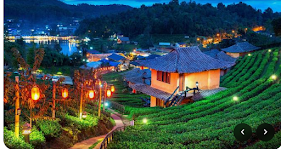Viñales, Cuba
Viñales is a picturesque town located in the Pinar del Río Province of western Cuba. It is renowned for its stunning natural beauty, characterized by lush green valleys, towering limestone formations known as mogotes, and vibrant tobacco fields. The town itself is small and charming, with colourful colonial-style houses lining its streets.
One of the
main attractions in Viñales is the Viñales Valley, which is a UNESCO
World Heritage Site. Visitors often explore the valley on horseback or by foot,
taking in the breathtaking landscapes and visiting local tobacco farms where
traditional methods of cigar production are still practiced.
In addition
to its natural beauty, Viñales offers opportunities for outdoor activities such
as hiking, rock climbing, and birdwatching. The town also has a lively cultural
scene, with live music performances and opportunities to learn about Afro-Cuban
traditions.
Overall,
Viñales is a must-visit destination for travelers seeking to experience the
natural beauty and rich cultural heritage of Cuba. Here the atmosphere is very
cozy and calm, which is idyllic to enjoy a few days of relaxation and
reflection in contact with nature, with many options for outdoor activities,
such as climbing, horseback riding, etc.
A visit to
the Prehistory Mural is an unbeatable way to get closer to the art of
the inhabitants of Viñales. You will fall in love with this enormous mural
painting, full of brightly colored figures in the famous Pita mogote.
Viñales has
several cave systems that you can visit:
The Cueva
del Indio, is a space
that will remain engraved in your memory thanks to its underground rivers such
as the San Vicente River, which you can explore by boat, and geological
formations with various shapes.
The Great
Cavern of Santo Tomás, with 46 km of extension, is the largest on the entire island and there
you can find bats hanging from the walls and large underground rivers that will
surprise you; Palenque de los Cimarrones, a museum dedicated to the passage of
escaped slaves who built their own societies in western Cuba.
courtesy:visitarcuba
MR





Comments
Post a Comment